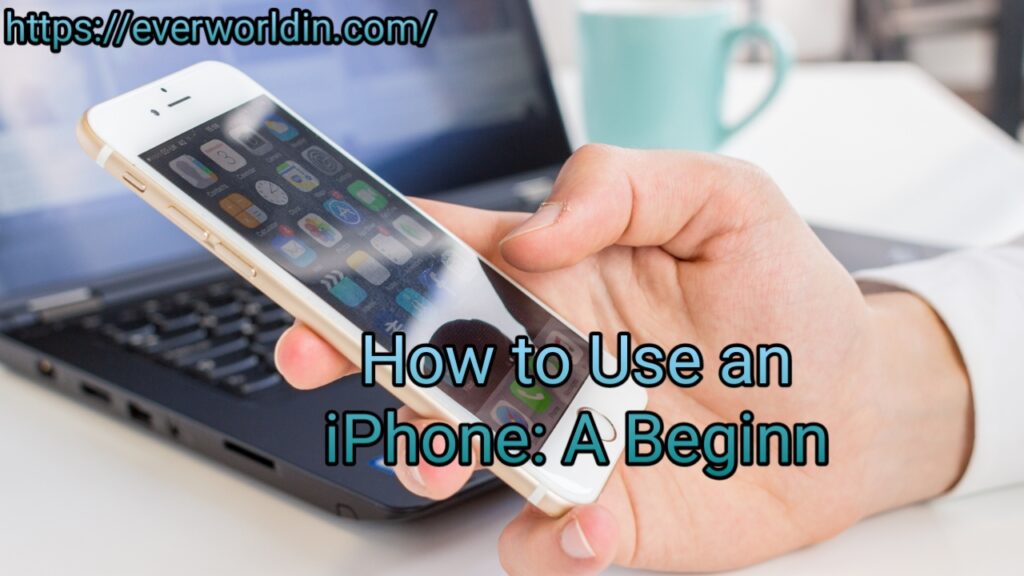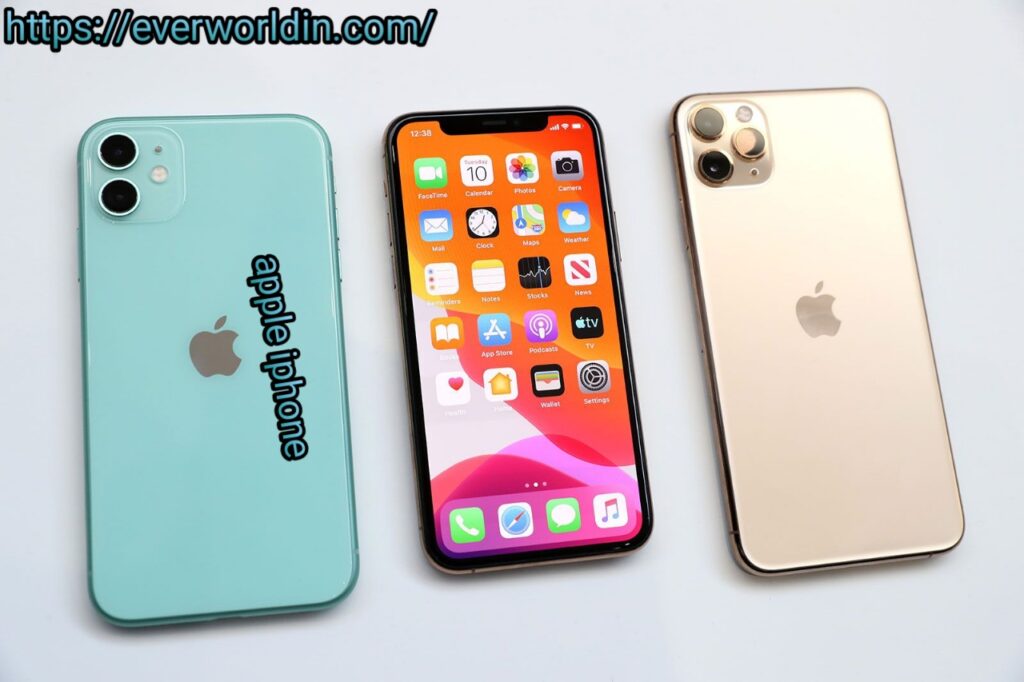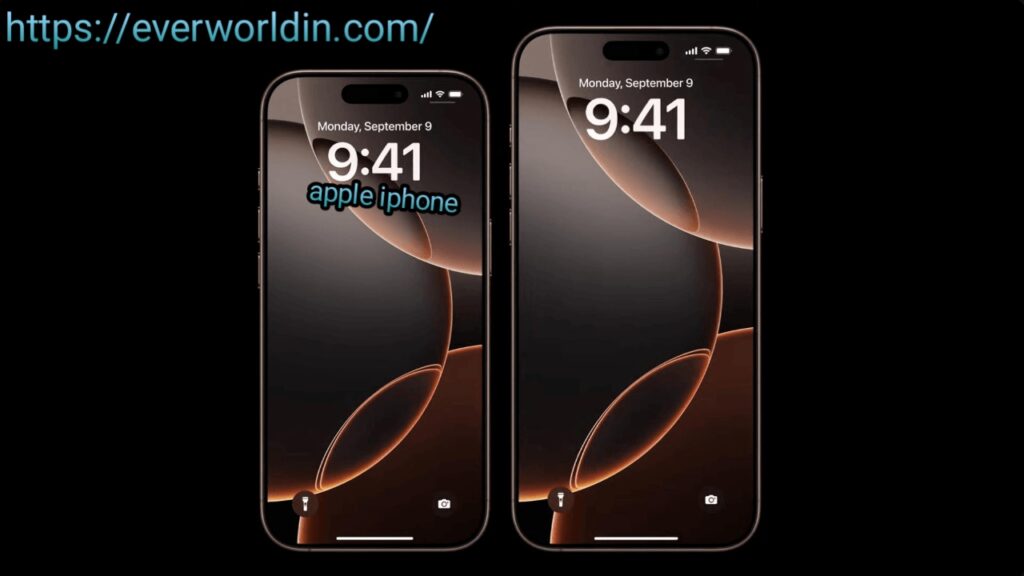📱 Introduction
Welcome to the ever-evolving, endlessly fascinating world of the iPhone—a device so seamlessly woven into modern life that it’s practically an extension of ourselves.
Whether you’re unboxing your very first iPhone or simply looking to harness its full potential, this guide will take you from clueless to confident, from tentative taps to tech-savvy swipes.
But let’s be clear: the iPhone is more than just a phone. It’s a pocket-sized powerhouse,
a digital Swiss Army knife brimming with capabilities—some obvious, others hidden beneath layers of intuitive design and software sorcery.
From Face ID wizardry to Siri’s eerily accurate suggestions, there’s a lot to uncover.And here’s where things get interesting.
While Apple prides itself on user-friendliness, the sheer depth of iOS can leave even the most seasoned users scratching their heads.
Ever wondered why some features seem almost magical while others feel maddeningly obscure?
It’s all about understanding the nuances, the shortcuts, and the secret handshakes hidden within the system.
In this guide, we’ll decode the essentials—setting up your device, navigating the interface, and tweaking settings to match your lifestyle. But we won’t stop there.
We’ll also explore pro-level tricks, uncover hidden gems, and demystify the quirks that make iPhones both brilliant and bewildering.
So, whether you’re here to learn the basics or uncover the iPhone’s deepest secrets, buckle up. The journey to iPhone mastery begins now.
📱What You’ll Learn in This Guide📱
This isn’t just another dry “how-to” manual. This is your blueprint to iPhone mastery. You’ll discover:
🔹 Essential Basics – Unlocking, navigating iOS, customizing settings, and managing notifications like a pro.
🔹 Power Features – Screen recording, privacy controls, emergency SOS, and automation with Shortcuts.
🔹 Hidden Tricks – Gesture controls, text editing hacks, and secret features that even longtime users overlook.
🔹 Troubleshooting & Optimization – Battery-saving tips, app management, and what to do when things go wrong.
Whether you just unboxed your iPhone five minutes ago or you’ve had it for a while but feel like you’re only scratching the surface, this guide will take you from beginner to power user in no time.



How to Use an iPhone: A Beginner
1. How to Unlock Your iPhone:
The Gateway to Your Digital World
Unlocking your iPhone—such a simple act, yet one that holds the key to a universe of possibilities.
With a single motion, you transition from a locked screen to an ecosystem of apps, messages, and endless digital wonders.
But how exactly does one achieve this seemingly effortless feat? Let’s break it down.
Method 1: Face ID – The Blink-of-an-Eye Entry
Gone are the days of clunky passwords and tedious typing. If you own an iPhone with Face ID (think iPhone X and beyond), unlocking is as swift as a glance.
Your phone analyzes the unique contours of your face, mapping it with infrared precision, even in pitch darkness.
How it works:
Simply raise your iPhone—wake it up with a tap or lift.
Stare directly at the screen. No need to exaggerate your expression; your natural look is enough.
A swift upward swipe, and voilà! You’re in.
It’s almost eerie, isn’t it? Like the phone knows you better than you know yourself.
But what if you’re wearing sunglasses, a mask, or just having a bad face day? Worry not—Face ID adapts, learning subtle changes over time, though it may occasionally demand a passcode as backup.
Method 2: Touch ID – A Fingerprint Away
For those wielding iPhones with a home button, Touch ID remains a marvel of simplicity.
Your fingerprint—an intricate, unrepeatable signature—acts as your key.
To unlock:
Place your registered finger lightly on the home button.
A near-instant scan, and—just like that—you’re inside.
Smooth. Secure. Almost too easy. But if your hands are wet, greasy, or wrapped in winter gloves, you might run into hiccups.
Method 3: The Passcode – Old-School but Reliable
When technology falters, the good old passcode remains a steadfast guardian.
Whether it’s a four-digit classic or a six-digit fortress, this method is timeless.
To use it:
Wake the iPhone.
Swipe up (or press the home button on older models).
Enter your passcode.
Emergency Unlocking & Security Measures
There’s a lesser-known trick for those moments when security is paramount.
Press and hold the power and volume buttons together—this temporarily disables Face ID and Touch ID, requiring a passcode. A useful feature when privacy is a priority.
2. How to Silence Notifications & Power Down Your iPhone:
Mastering Digital Tranquility
✴️1.Silencing Notifications: The Sound of Silence ✴️
🔇 Method 1: The Mute Switch – Instant Peace at Your Fingertips
Ah, the “mute switch“, a tiny yet powerful guardian of sanity.
Found on the left side of your iPhone, this unassuming toggle is your fastest route to muting all ringtones and alerts.
How to use it:
✴️Flip the switch downward (if you see a small orange strip, your phone is silenced).
✴️Calls, texts, and app alerts will now stay mute—unless overridden by emergency bypass settings.
Simple. Instant. No extra steps needed.
⚡ Method 2: Do Not Disturb – Silence, but Smarter
For those who want to silence notifications “without missing crucial calls, Do Not Disturb (DND)” is your answer.
This feature goes beyond muting—it filters, schedules, and customizes what gets through.
To activate DND:
1. Open Control Center (swipe down from the top-right on Face ID models, or up from the bottom on Home Button models
.2. Tap the crescent moon icon—boom, silence!
3. Long-press the icon to tweak settings like “For 1 hour” or “Until I leave this location.”
💡 Pro Tip:
✴️Head to Settings → Focus → Do Not Disturb for advanced options.
✴️Allow calls from select contacts, enable app exceptions, or schedule DND for bedtime/work hours.
🌙 Method 3: Focus Modes – Next-Level Control
Apple’s Focus Modes are like Do Not Disturb on steroids.
Whether you’re working, sleeping, or gaming, you can create tailored silence profiles for different scenarios.
To enable:
1. Go to Settings → Focus and create a custom mode.
2. Choose which apps and people can bypass the silence.
3. Activate via Control Center when needed.
✴️2. How to close your iPhone: Last reset✴️
Sometimes, you just need a complete disconnect.
Whether for troubleshooting, battery conservation, or simply forcing yourself to unplug, is an essential skill to close your iPhone.
💀 method 1: Standard Shutdown (Soft Power Off)
1. Press and side button + volume up/down (for face ID model) or just catch side button (for iPhones with home button).
2. A slider will appear- “slide to power off”.
3. Swipe correct, and the screen fade in oblivion
💥 method 2: Hard reset (when your iPhone freeze)
Sometimes, things are not employed – your phone becomes frozen on time like a digital statue. In such cases, a force is a nuclear option
For iPhones with a home button :
Press the power button + home button together until the Apple logo is from zero surfaces to surfaces.
🌍 Method 3: Power off through settings (unconventional method)
If your buttons are working, you can still close your iPhone without pressing anything:
1. Navigate on settings → normal.
2. Scroll down and tap shutdown.
3. Slide the power-off bar to get out of the digital scope.
3.How to Factory Reset :
The Art of Rebirth and Rebooting
There comes a time in every iPhone’s life when a fresh start is not just an option—it’s a necessity.
Maybe your device is sluggish, glitchy, or simply acting like it’s possessed. Perhaps you’re selling it, trading it in, or passing it down.
In these moments, knowing how to restart or factory reset your iPhone isn’t just useful—it’s vital.
Restarting is like a quick nap, refreshing your device without erasing anything.
A factory reset? That’s the digital equivalent of a memory wipe, a return to factory-fresh purity. Let’s explore both.
1.How to Factory Reset
Step 1: Perform the Factory Reset)Once backed up, let’s wipe that iPhone clean.
Go to Settings → General → Transfer or Reset iPhone.
Tap Erase All Content and Settings.
Enter your passcode (if prompted).
Tap Erase iPhone and confirm.
💀 Boom. Your iPhone is now a blank slate. It will restart and prompt you to set it up as new or restore from a backup.
Step 2: If You’re Selling or Giving Away Your iPhone
If you’re handing your iPhone over to a new owner, sign out of iCloud first to disable Activation Lock
so the new user can actually use it
.Go to Settings → [Your Name] → Sign Out.
Enter your Apple ID password and confirm.
THEN do the factory reset.
Without signing out, the phone will still be linked to your Apple ID—even after erasing it.
Restarting is like a quick refresh, fixing minor bugs and keeping things running smoothly.
A factory reset, on the other hand, is a total rebirth, erasing all traces of your digital existence.
Whether you’re troubleshooting, reclaiming speed, or preparing to say goodbye to your iPhone, knowing these reset methods ensures you’re always in control.
Now go forth, restart, reset, and wield your iPhone with confidence. 🚀
4. How to Screen Record on iPhone: Capturing the Magic in Motion
Imagine this—you’ve just pulled off an insane gaming move, stumbled upon a bizarre glitch, or need to guide a technologically-challenged friend through their iPhone settings (again).
A screenshot? Not enough. You need proof in motion, a full-fledged digital playback.
Enter screen recording, one of the most powerful yet underutilized iPhone features.
But it’s not just about hitting a button. There are hidden tricks, settings to tweak, and ways to elevate your screen recording game to near-professional levels. Let’s dive in.
Step 1: Enable screen recording (if it’s not already)
Your iPhone does not carry this feature forward) – you need to call it in depth of your settings.
1. Open the settings and navigate on the control center.
2. Scroll down on screen recording and tap on the Green Plus (+) button to add it.
3. Now, swipe down from the top-right corner (or bottom top) to reveal the control center-a screen recording icon (a solid circle inside a ring) should wait for you.
💡 Pro Tip:
If the icon is not there, you have not added it. Go back and try again!
Step 2 : Where to find your recording and editing magic
All your screen recording is automatically saved on your photo app. No prey is required.
📂 to find your work:
Open photo → album → screen recording (or just check your recipes
.Tap your recording to see, share or edit.
🛠 Need to trim or edit?
Edit in pictures tap.
Pull the yellow trim bar to remove unwanted parts.
Adjust the exposure, add filters, or even crop!
For advanced editing, consider using iMovie, Capcut, or any pro-level video editor
Step 3: Pro Tips & Troubleshooting
✅ No Sound? Check if the microphone is off (long-press the recording button to toggle it.
✅ Record in Landscape Mode for better YouTube and social media compatibility.
✅ Low Storage Warning? Clear some space before recording long videos.
✅ Screen Recording Not Working? If the button is grayed out, Screen Recording may be restricted (check Settings → Screen Time → Content & Privacy Restrictions)
Whether you’re recording tutorials, documenting bugs, or just capturing funny moments, screen recording turns your iPhone into a storytelling machine.
Master this feature, and you’ll never again struggle to explain “how to” do something—just show it.
Now, go forth and record your digital world! 🎬✨
5. How to Record a Phone Call on iPhone:
The Elusive Art of Capturing Conversations
Ah, recording a phone call on an iPhone—a seemingly simple task that Apple, in its infinite wisdom, has wrapped in layers of restrictions.
Unlike Android devices, where call recording is often just a tap away, iPhones treat this feature like a forbidden relic.
Why? Privacy laws, security concerns, and Apple’s strict policies.
But don’t despair! Where there’s a will, there’s a way.
While iOS won’t let you press a simple “Record” button mid-call, you can still capture conversations legally and effectively using a few clever workarounds.
Let’s dive into the best methods.
:+: Is Recording Calls Legal? Read This First!
“⚖️ Laws vary by location! In some places, both parties must consent to being recorded. In others, only one party (you) needs to be aware.“
“”📍 One-Party Consent States/Countries: You can record without telling the other person.
📍 Two-Party Consent States/Countries: You must inform the other party before recording.“”
“Before recording a call, check local laws to avoid legal trouble!”
Method 1: The Voicemail Trick (No Extra Apps Needed
If you don’t want to install third-party apps, your iPhone’s built-in voicemail can act as a sneaky call recorder.How It Works:
1. Call the person you want to record.
2. Once connected, tap “Add Call” and dial your own phone number.
3. This sends the call to your voicemail, where it gets recorded.
4. Merge the calls, creating a three-way conference.
5. Once finished, end the call—your voicemail will now contain a recording of the conversation!
Where to Find the Recording:Go to the Phone app → Voicemail tab.
Your recorded call should be sitting there, ready to be saved or shared.
+Downside? Not all carriers support this trick, and voicemail storage is limited. If this doesn’t work, move on to the next method.
Method 2: Using Third-Party Call Recording Apps
The Most Reliable Way
For a professional, high-quality recording, third-party apps are your best bet.
Since Apple doesn’t allow apps to record calls directly, these apps use clever workarounds (like conference calling through their own servers.
Top Call Recording Apps for iPhone:
📌 Rev Call Recorder (Free, no time limits, but U.S. numbers only
.📌 TapeACall Pro (Works worldwide, requires a paid subscription).
📌 Google Voice (Free but only records incoming calls
How These Apps Work:
1. Open the app and follow the instructions to set up a three-way call (your caller, you, and the recording service).
2. Start recording once the call is merged.
3. After the call, the app provides a downloadable recording.
+Downside? Most good call-recording apps require payment, and some work only in specific regions.
6. How to Turn Off Find My iPhone:
The Key to Unlocking Your Device’s Freedom
Apple’s Find My iPhone feature is both a guardian angel and a gatekeeper.
It safeguards your device against theft, helps you locate a lost iPhone, and keeps your data secure.
But when the time comes to sell, trade in, or repair your device, this powerful security tool becomes an obstacle.
Disabling Find My iPhone isn’t just about flipping a switch—it’s about unlinking your Apple ID, disabling Activation Lock, and ensuring no one else is locked out of your device.
Whether you’re holding the iPhone in your hands or need to do it remotely, here’s the definitive guide.
Why You Need to Turn Off Find My iPhone
✔️ Selling or Trading In? Apple requires this feature to be disabled before resale.
✔️ Getting Your iPhone Repaired? Some Apple and third-party repair services won’t accept a device with Find My iPhone enabled.
✔️ Restoring or Resetting Your iPhone? If Find My iPhone is still active, you’ll hit a roadblock during setup.
✴️Security vs. Control
Find My iPhone is a double-edged sword—a security powerhouse when you need it, but a major inconvenience when you don’t.
Whether you’re preparing to sell, repair, or wipe your device, knowing how to properly disable Find My iPhone ensures you stay in control
Conclusion
From Novice to iPhone Maestro—Your Journey Has Just BegunYou started this guide as an iPhone user—now, you’re an iPhone master.
From unlocking the basics to uncovering hidden features buried deep within iOS, you’ve navigated the intricate maze of Apple’s ecosystem, and now you wield your device with precision, confidence, and flair.
But here’s the thing—this is just the beginning.
Apple’s iPhone is not a static piece of technology; it’s constantly evolving.
With every iOS update, new features emerge, old ones get refined, and the way we interact with our devices shifts.
The real power of your iPhone isn’t just in the hardware or software—it’s in your ability to adapt, explore, and push the limits of what’s possible.
The Art of iPhone Mastery: What Comes Next?
🚀 Keep experimenting – Have you found a feature you love? Dive deeper. The more you explore, the more seamless your experience will be.
📱 Stay updated – Apple rolls out new features all the time. Keep an eye on updates, patch notes, and tech blogs so you can stay ahead.
🔍 Customize and optimize – Now that you know the power of your iPhone, make it your own.
Tweak settings, automate tasks, and streamline your experience.
🛠️ Troubleshoot like a pro – No more panicking when something goes wrong.
Now you understand how to reset, repair, and optimize performance when needed.
iPhone isn’t just a device—it’s an extension of you. And now that you’ve unlocked its potential, it’s time to use it easily, efficiently, and—most importantly—on your terms.)
So go ahead, swipe, tap, tweak and explore. The world of iPhone mastery is limitless.
And remember: the real power isn’t in the device – it’s in the hands of the person who knows how to use it. 💡🔥
create a website link use (automatically Code connect (They’ll get a 20% discount too)

